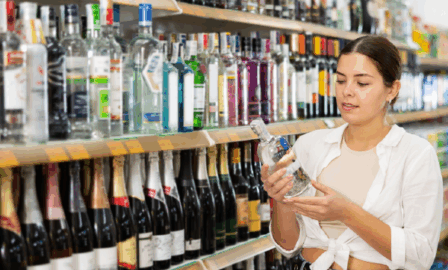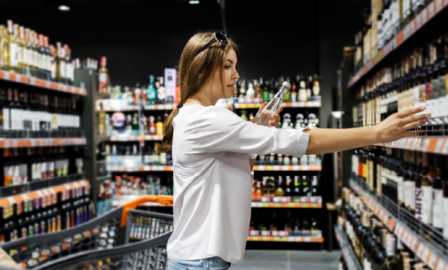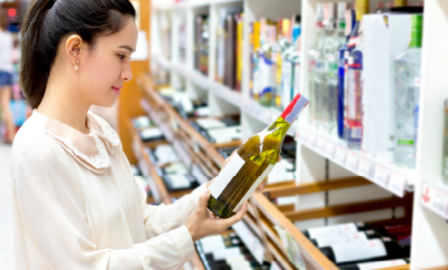Exploring Technology Trends Shaping the Alcohol Industry
The alcoholic beverage industry, known for its rich traditions and centuries-old craftsmanship, is undergoing a significant transformation with the integration of technology, particularly as companies still navigate the effects of COVID-19 and evolving consumer demands. As technology advances, it has opened new avenues for winemakers, distillers, and retailers to improve production processes, enhance customer experiences, and boost their efficiency. From machine learning to predict demand and market trends, to VR wine tastings and even using smart sensors to tend to vineyards, we’re seeing a shift in the industry as a whole thanks to increased adoption of areas like biotech and artificial intelligence (AI). In this piece, we explore the most exciting technology trends shaping the alcohol industry and their potential impact on the sector’s future moving forward.
5 Technology Trends Shaping the Alcohol Industry
1. AI and Machine Learning
AI and machine learning have revolutionized various aspects of production, marketing, and customer experience through benefits such as quality control, predictive analytics of consumer preferences, and precision agriculture. Maintaining consistent quality and compliance with regulatory standards is especially crucial for the alcoholic beverage industry. The use of AI for quality control systems can help alcoholic beverage companies greatly reduce costs and increase their efficiency. For example, with the ability to automate the testing and inspection process of beverages, AI can detect defects and provide valuable insights to help businesses make informed decisions and remain compliant with industry and government safety standards.
Additionally, through the use of machine learning algorithms and predictive analytics, companies can gather information on behavior and product preferences to better meet consumer expectations. AI and ML technologies can analyze vast amounts of data, including temperature, fermentation rates, and chemical composition, to better predict the optimal conditions for producing specific flavors and aromas. As a result, winemakers and distillers can now fine-tune their recipes and production methods to ensure consistent and exceptional products with every batch.
Take, for example, Mackmyra Whisky, a Swedish distillery that partnered with Microsoft and Fourkind, a Finnish tech company, to collect data that led to the first AI-generated whisky. They were able to work together to gather information on customer feedback and run it against Mackmyra’s recipes to generate thousands of new recipes. Machine learning was used to recognize what made recipes better, and their algorithm helped to make a brand-new recipe for whiskey that made its way to production. Similarly, one innovative brewery Carlsberg has already invested millions of dollars into an AI initiative dubbed “the Beer Fingerprinting Project,” which uses chemical AI sensors to detect the nuances of taste in its new beers, evaluate their composition, and analyze yeast types while matching desired flavors with chemical counterparts.
Whether it’s to ensure high levels of quality and consistency for regulatory compliance, or to better meet consumers’ preferences for taste and composition, we are beginning to see more unique uses for AI in the beverage industry that will continue to impact the sector in the years to come.
2. Post-Production Innovations
Beyond the vineyard, technological solutions are optimizing many aspects of production, especially storage and distribution. Smart storage systems allow for better inventory management, reducing costs and ensuring optimal conditions for wine aging. Furthermore, electronic labels on bottles can provide comprehensive information about the wine’s origin, grape variety, and aging process, facilitating transparency and traceability.
Wine labels are poised to become far more sophisticated and interactive with the help of technology. Information will be accessible via QR codes and even AR, giving buyers insights into the product they are buying as well as the production processes and conditions in which it was made. Sparflex, for example, has developed a wine foil that, when scanned by its corresponding app, comes to life with animations and text, telling the story of the wine in question and acting as a sales portal to the producer’s website. After the wine is bottled and distributed, AI can then analyze consumer taste preferences, enabling wineries to craft wines that align with those tastes or suggest wines that consumers are more inclined to purchase.
Looking forward, we can anticipate more alcoholic beverage companies adopting comparable marketing strategies, utilizing AI and technology to design interactive and creative wine bottle packaging. This approach aims to captivate consumers, crafting immersive brand narratives and experiences that influence their purchase decisions from the shelf.
3. Augmented Reality (AR) and Virtual Tastings
The modern-day consumer is increasingly demanding the most convenient and personalized customer experience possible, especially when it comes to an alcoholic beverage – part of an industry centered around experiences – and new technology is changing the way consumers look at the world of wine tasting. Augmented reality (AR) and virtual reality (VR) have transformed the way consumers discover, taste, and experience wines and spirits. For example, these technologies enable consumers to virtually tour vineyards and distilleries, gaining insights into the production process directly from the experts. Additionally, AR allows consumers to scan wine labels and receive detailed information about the product, such as tasting notes, food pairings, and origin stories at any time or place, all from a mobile device. Virtual tastings have also become increasingly popular in the years following the pandemic, enabling consumers to participate in guided tasting sessions from the comfort of their homes, transcending geographical boundaries and reaching a broader audience.
Companies like online wine retailer Vinebox have been utilizing AR services to reach consumers for years now. To draw more customers to their wine delivery service, the startup created a virtual sommelier that provides users with tasting notes, the perfect serving temperature, and what food would better complement wine flavors.
Alcohol companies can put themselves in a strong competitive position by offering customers a personalized experience partnered with expert recommendations all from the convenience of their home, enabled through augmented and virtual reality platforms.
4. eCommerce and Personalization
The rise of eCommerce platforms has empowered consumers to explore and purchase a wide range of wines and spirits online. Alcohol eCommerce is already becoming the next big DTC trend, with the global market projected to hit $42 billion by 2025. Since the pandemic, consumers are more mobile than ever, purchasing almost everything on the go or for immediate delivery. With the help of AI-powered algorithms, these eCommerce platforms can recommend products based on consumers’ preferences and past purchases, creating personalized shopping recommendations and improving the customer experience. Additionally, some companies are utilizing chatbots to engage with customers, answer their questions, and guide them in finding the perfect bottle to suit their taste preferences.
Despite widespread adoption from many wine and liquor delivery eCommerce platforms, the selling of liquor involves many licenses and compliance with district, state, and federal laws. Depending on their location, wineries and wine producers/retailers can face challenges around alcohol transportation, shipping, logistics, and getting approval from authorities in the shipped location. Companies looking to enter this sector must carefully consider compliance with relevant regulations.
5. Biotech Enhancement
Biotechnology is contributing to the sustainability and profitability of the alcoholic beverage industry in various new and innovative ways. Using genetic engineering, brands are developing yeast strains that produce unique flavors and aromas in beer, wine, and spirits. Bio-enhanced fermentation technologies can also be used to create healthier and more sustainable alcoholic beverages. For example, immobilized cell technology improves the stability and productivity of fermentation processes.
Genetically modified yeasts also tolerate higher temperatures, pressures, and ethanol levels, and produce novel compounds such as vitamins, antioxidants, and enzymes. These innovations will change the way we view beer and liquor production and open a new world of possibilities when it comes to personalization in these spheres.
Biotechnology’s developments have not only helped improve product quality but also made it possible to prepare beverages with a range of characteristics and longer shelf life. This gives alcohol companies an opportunity to make their processes more time-efficient and cost-effective, as well as ensure the highest quality and consistency for their consumers.
Looking Ahead
Like many others, the alcohol industry is embracing technology to innovate and improve various aspects of its operations to meet customers’ demands. From smart vineyards and AI-driven quality control to AR-enhanced experiences, technology is redefining the way we produce, distribute, and enjoy wines & spirits. While traditional craftsmanship and expertise remain at the heart of the industry, these technological advancements complement and enhance existing practices, offering a glimpse into an exciting and tech-driven future for enthusiasts worldwide.
Learn more about our wine & spirits consulting services today.
Subscribe to Clarkston's Insights
Contributions from Julia Hoffman



